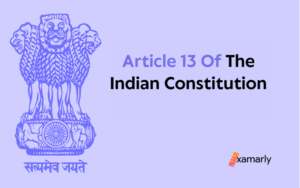Nasiruddin Mahmud Shah is known for his ascension to the throne as the eighth Sultan of the Delhi Sultanate. Besides being the Sultan, he was popular because of his immense submergence in religious beliefs.
In 1246, he was proclaimed the ruler after Ala ud-din Masud. Nasiruddin’s reign was majorly assisted by Ghiyasuddin Balban.
Let’s walk through the historical lanes of his life and learn more about him. You’ll also find out about his reign and empire, as well as his role in the history of the Delhi Sultanate.
The following details about Nasiruddin Mahmud Shah will be productive for the preparation for the UPSC exams.
- Who Was Nasiruddin Mahmud Shah?
- Early Life
- Conclusion
- Frequently Asked Questions
- Who was Nasiruddin Mahmud Shah?
- When did Nasiruddin Mahmud Shah rule?
- What were some of Nasiruddin Mahmud Shah's accomplishments?
- What was the Slave Dynasty?
- What was the duration of Nasiruddin Mahmud Shah's reign?
- Where is Nasiruddin Mahmud Shah buried?
- What was the significance of Nasiruddin Mahmud Shah's reign?
Who Was Nasiruddin Mahmud Shah?
The son of Sultan Iltutmish (the sultan from Delhi), was the eighth ruler of the Slave Dynasty (Mamluk dynasty). Nasiruddin Mahamud, a Muslim religious, lived a life devoted to his religion and wrote Quran verses.
During his reign, he dedicated most of his hours to prayers and religious activities. He cultivated a reputation for helping the poor and patronized the learned. While Ghiyasuddin Balban was the second-in-command. But how do you know if he was a good ruler?
Let’s learn about his life in detail.
Early Life
Nasiruddin Mahmud, the eighth ruler of the Mamluk Sultanate, was a devout Muslim who loved religion. He was born to Sultan Illtutmish and Turkan Khatun. He was a skilled scribe and earned his living selling scripts of the Holy Quran.
Nasiruddin ruled the Slave Dynasty between 1246 and 1266. He ruled over more than a hundred thousand slaves in his lifetime. He had four wives. He succeeded the throne after Ala ud-din Masud. In 1246, Nasiruddin took the ascension at the delicate age of 17 or 18.
Minhaj-i-Siraj was his court historian, who wrote a biography about the dynasty dedicated to Nasiruddin Mahamud.
Personality and Character
From 1246 to 1266, Delhi was the home of the eighth ruler in the Slave Dynasty. He lived a holy life, wrote Quran verses for a living, and was always there to help the poor and the learned.
He was briefly motivated by the idea of monogamy. Although he was a nominal king, he is considered to have been an exemplary leader.
Reign
Nasir-ud-din Mahmud shah’s period of rule was marked by several notable events. In the reign of Nasir-ud-din Mahmud, Ghiyasuddin Balban was the second-in-command and the most powerful minister in the Slave Dynasty.
Balban was elected to power and ruled for twenty years from 1266 to 1287, after Mahmud. He was a son of a Turkish noble.
Political Condition
However, the political condition of India at that time needed a strong ruler who could consolidate its authority and power to crush the power of the enemies.
This would, in the future, lead to maintaining peace and order within the country and saving it from attacks by the Mongols. And fortunately for India, Nasir-ud-din Mahmud’s father-in-law Balban was the capable minister to look after the administrative affairs and had real powers.
Several historians have mentioned that Sultan Nasir-ud-din Mahmud Shah avoided doing things that would upset the ‘Corps of Forty’ of Turkish nobles. According to Professor K.A. Nizami, “The surrender was absolute” since the Sultan did nothing to arouse the wrath of “forty.”
Nasiruddin Mahmud Shah and Balban
The relationship between Nasiruddin Mahmud Shah and Balban is a fascinating one. Nasiruddin Mahmud Shah married Malikah-i-Jahan Khani, daughter of Ghiyas ud din Balban.
Nasiruddin Mahmud was a nominal king. The monarch was so devoted to the Prophet that he dedicated the majority of his time to prayer and Balban was more involved in state affairs.
His reign of four years was administered by Ghiyasuddin Balban, who has been faithful to him for years. Balban was a competent man with the ability to retain proper organization in the reign of Mahmud.
He kept a check on the attacks by the Mongols. He ensured proper working of home and foreign affairs during Nasiruddin’s reign.
For a while, Nasiruddin replaced Balban with Rihan. But in Rihan’s ministership, the reign experienced distress and disorder. The common people faced difficulties in moving freely across the streets of Delhi. Hence, Balban was stated back to his position, the very next year.
Death
Nairuddin Mahmud Shah died in 1266. Since he has no heir after him to ascend the throne, Balban took over and became the next ruler of the Slave Dynasty.
Conclusion
The Sultan Nasiruddin Mahmud, the eighth sultan of the Mamluk Sultanate, surfaced as the Sultan, in 1246, after the death of his predecessor, Alauddin Masud Shah.
As a devout Muslim, Nasiruddin Mahmud spends a significant amount of his time studying the holy Quran or praying. He was so pious that he had no servant in his household. Ghiyas Ud Din Balban was his regent and dealt with state affairs.
In this blog, we have curated some important points about Nasiruddin Mahmud Shah for UPSC aspirants. Hope we have helped you to increase the pace of your exam preparation.
Frequently Asked Questions
Who was Nasiruddin Mahmud Shah?
Nasiruddin Mahmud Shah was a ruler of the Slave Dynasty that ruled over parts of the Indian subcontinent from the 13th to the 16th centuries. He was the 8th Sultan of the dynasty and ascended to the throne after the death of his father, Ghiyasuddin Balban.
When did Nasiruddin Mahmud Shah rule?
Nasiruddin Mahmud Shah ruled from 1246 to 1266 AD.
What were some of Nasiruddin Mahmud Shah’s accomplishments?
During his reign, Nasiruddin Mahmud Shah strengthened the administrative and military structures of his kingdom. He also built several architectural structures, including mosques, tombs, and gates, many of which still stand today. Additionally, he is credited with expanding the kingdom’s territory by conquering several neighboring regions.
What was the Slave Dynasty?
The Slave Dynasty was a Muslim dynasty that ruled parts of the Indian subcontinent from 1206 to 1290 AD. It was founded by Qutb-ud-din Aibak, who was a slave of the Ghurid Empire. The dynasty was known for its military conquests, administrative reforms, and cultural achievements.
What was the duration of Nasiruddin Mahmud Shah’s reign?
Nasiruddin Mahmud Shah ruled the Delhi Sultanate from 1394 to 1412.
Where is Nasiruddin Mahmud Shah buried?
Nasiruddin Mahmud Shah is buried in the Qutub Complex in Delhi, India. His tomb is known for its intricate and beautiful architectural design.
What was the significance of Nasiruddin Mahmud Shah’s reign?
Nasiruddin Mahmud Shah is remembered for his contributions to the cultural, architectural, and military history of the Indian subcontinent. He is also credited with expanding the territories of his kingdom, which helped to establish the Slave Dynasty as a prominent force in the region.
.






